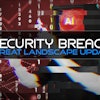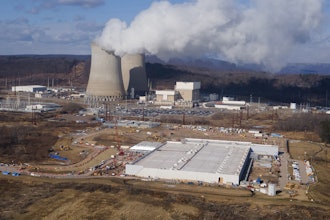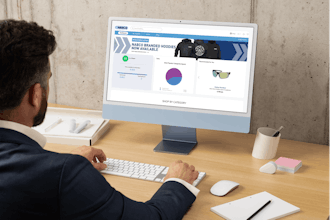
Businesses today are dealing with technological innovations at a pace never experienced before. As B2B manufacturers shift to the cloud and add new auxiliary systems like eCommerce and global logistics applications, they face the challenge of integrating these new applications into their legacy ERP systems.
While they’ve always been important, ERPs have now become even more critical to manufacturers because of the even broader array of applications they manage.
The problem is that many manufacturers still run their businesses on legacy ERP technology, which may be 10 or more years old. Traditional ERP developers didn’t build their systems with the digital world in mind. And they certainly didn’t develop them with the functionality to integrate with new technologies like cloud applications.
Therefore, patchworking these new apps and connecting them back to the ERP via middleware has served as a temporary solution. But this practice can’t continue if businesses want low-risk, high performing functional systems.
Without implementing a completely new system, manufacturers can find it challenging to get the functionality from more recent technologies like cloud applications. Unfortunately, many manufacturers can’t afford a complete overhaul from a time or resource perspective.
ERP Layering Reduces Disruptions
The good news is that ERP layering enables manufacturers to minimize business disruption by quickly adding new or enhanced applications, providing better functionality without a full overhaul of the system.
With new applications and innovations coming out nonstop, companies need their ERP solutions to keep up. Using a layered approach, legacy ERP solutions can have the modern functionality they require and integrate with cloud applications while staying under an organization’s threshold for acceptable risk.
There are three approaches to ERP layering, each with its own benefits and drawbacks. Organizations should evaluate each and decide which makes the most sense for them.
1. Top-Down Layering
The top-down layering approach focuses on functionality. With this method, businesses search for best-of-breed tools to achieve their goals instead of identifying individual applications that natively integrate with their ERPs.
For example, if a business decides to add planning software to its ERP, it may select the most feature-rich, best planning software on the market even though it doesn’t easily integrate with the company’s ERP.
While this approach enables the company to use the specific point solution it desires, this option opens the door to more risk because the add-on application now needs to be retrofitted into the legacy ERP. As a result, the company may have to use APIs and other connectors to make it work.
2. Center-Out Layering
Center-out layering strikes a happy medium between adding functionality to an ERP and keeping the risk low. With this approach, organizations look for applications that have native integrations to its existing ERP system.
While the integrated application may not offer all of the features the organization wants, it will still improve its functionality with less customization. Additionally, the company won’t have to contend with as much risk as it might with a system that requires custom built APIs.
3. Bottom-Up Layering
Bottom-up layering is the most conservative approach to ERP layering. It relies on the organization being able to utilize software that already exists in the ERP or the larger software ecosystem.
For example, a company using an Oracle ERP would only look at other Oracle applications to add new functionality. While this approach adds the least amount of risk, it can reduce access to needed functionality because it limits the number of applications to consider.
ERP Layering vs. a Full Overhaul
Getting more functionality out of a legacy ERP with layering is a means to an end. It enables organizations to add the functionality they need without committing to the time and expense that a full overhaul would require.
There are also fewer change management issues, which means fewer disruptions for employees and customers. ERP layering is the right move for a business when its ERP still works for business, but connections to cloud applications or new features are needed.
However, if the ERP can no longer support the business in the way you need, layering likely won’t be able to add enough functionality to make up the difference. In this case, it’s probably better to begin a full overhaul of the ERP system, but it requires significant advance notice of the change for employees and customers lots of advance notice of the change, so they can prepare for the disruptions they’ll likely face.
Plus, new ERPs are typically very expensive and can take a long time to fully implement, meaning you’ll need to create a detailed plan for the project.
Can You Handle ERP Layering on Your Own?
The evaluation and setup for ERPs are complex. While some organizations have in-house ERP specialists to help them maintain the system, most must rely on outside support. When determining how to best modernize a current ERP system or whether a new system is needed, decide whether to use internal resources or engage outside help.
Using an outside implementation team can help reduce disruptions and risk. Plus, this approach is typically less expensive than recruiting and hiring internal resources.
---
John Ruddy is the Director ERP Global Solutions at Seneca Global. Ruddy drives NetSuite and other ERP projects and engagements for a variety of clients and industries covering modernization, application support and advisory services.























